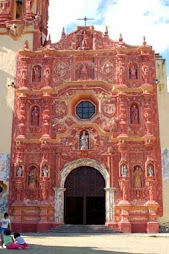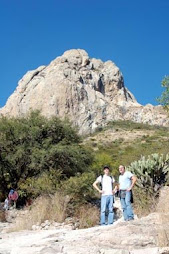
Tequisquiapan is a city in south-central Mexican state of Querétaro. It is famous for its thermal hotsprings, and for being the center of a wine and cheese area. The city serves as municipal seat of town around the same name. In the 2005 census, the city had a population of 26,858 inhabitants, the fourth largest community in the state of the population, while the municipality had a population of 54,929. The municipality has an area of 343.6 km ² (132.66 square miles) and includes many smaller communities, the largest of which are in San Nicolas and La Fuente.
Tequisquiapan, famous for its spas with thermal waters, becoming a popular tourist center of Mexico City and Queretaro residents, as well as a holiday destination for many Europeans. Its mild climate and colonial winding streets make it ideal for leisure trips. In the center of town is the Plaza Miguel Hidalgo, dominated by a 19th century wrought iron flag and surrounded by stone arches. At one extreme is the parish church of St. Mary of the Assumption, with its neoclassical facade, completed in mid-19th century. Spanish missionaries said that the mass of the first city in the giant mesquite tree next to it.
A patchwork of small, irregular, interlocking stone blocks pave Tequisquiapan of narrow streets leading to the central plaza, the Civic Plaza. Traffic is closed a block or two from it creating a pedestrian zone. Scattered throughout the city are several hotels with their own springs. A few meters from the many shops surrounding the Plaza de Tequisquiapan is a marketplace where visitors can admire and buy locally produced wicker and rush.
At the gateway to the Sierra Gorda, the increase is the peak of San Bernal, a gigantic monolith of 350 meters in height, the third highest in the world after the Rock of Gibraltar and Sugarloaf Mountain Rio de Janeiro. This rock is said that the city's inhabitants a long life, the average life expectancy of Bernal residents is said to be a staggering 94.7 years.
History
Before the arrival of Spanish conquistadors, the area now occupied by what is now the town of Tequisquiapan is commonly known as "Tequesquiatlapan" which means "river of water carbontated. Today, a tourist town Tequisquiapan is a weekend retreat for hundreds of residents of Mexico City who come to its air and sparkling crystal waters.
For much of the prehistoric period, the valley of Tequisquiapan was more than a village. The great Chichimecas Nahua and chieftains acknowledged the importance of place.
According to the local chronicler Landaverde Jesus Chavez, the lords of Jilotepec visited the natural springs and sources of Tequisquiapan only in very special occasions. Upon arrival, take a dip in the hot springs of one of their many sources, over which they deal with affairs of state and to resolve disputes among themselves mild.
The first Spanish settlements in the valley date from the 16th century, when Don Luis de Velazco, then viceroy of New Spain, Alonso de Estrada admitted and Lope de Sosa, the rights to the valley to raise cattle and maintain the stables. In the process of building the Finance Tequisquiapan in 1596, went to former residents across the river.
Culture
Tequisquiapan is especially known for its wines and cheeses, two entirely "new" foods that first appeared in the Americas with the arrival of Spanish conquistadors in 1521. It was during colonial Mexico, in what is now the State of Queretaro, the planting of vines and wine culture was first attempted and eventually took over. The Spanish conquistadors also brought cows, sheep and goats to the New World in 1492. During the first weeks of May, the vineyards of the area gather in the central square for the Festival of Cheese and Wine. Consisting of three days of wine and cheese tasting. This festival attracts many tourists every season.


